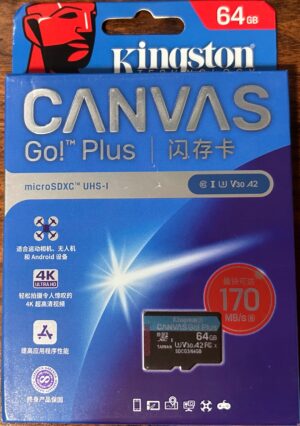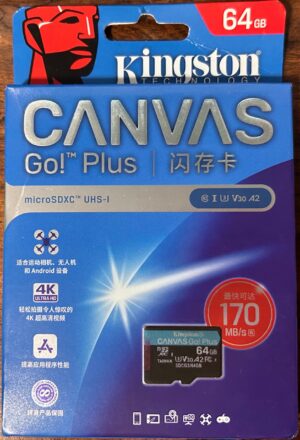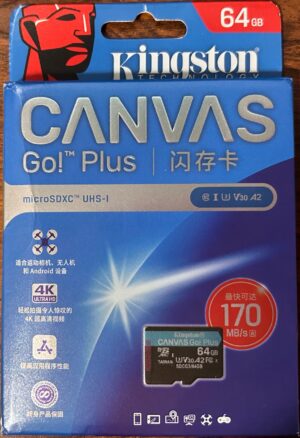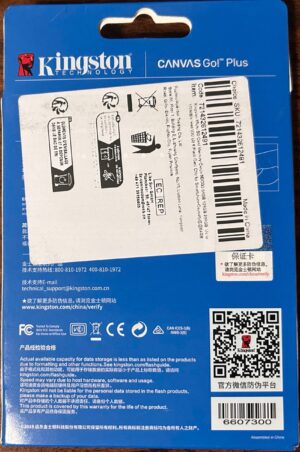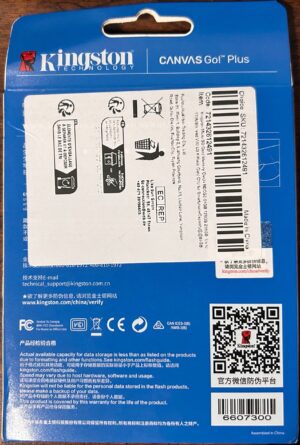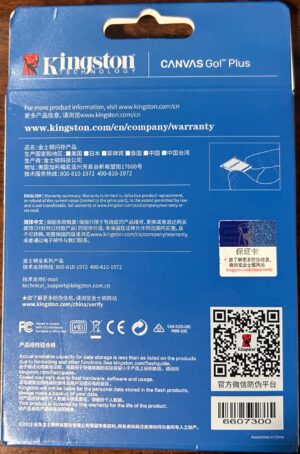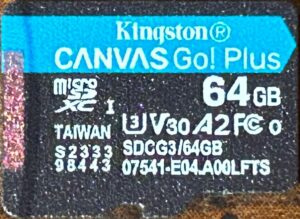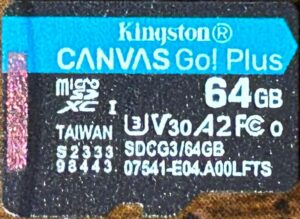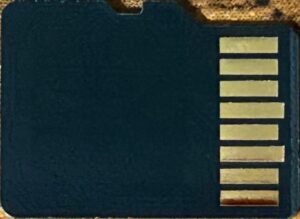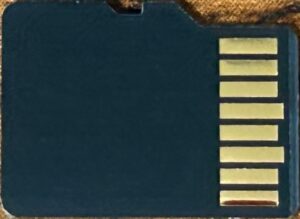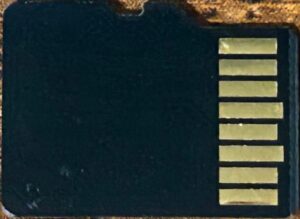- Obtained from: AliExpress
- Price paid: $5.19
- Advertised capacity: 64GB
- Logical capacity: 62,226,694,144 bytes
- Physical capacity: 62,226,694,144 bytes
- Fake/skimpy flash: Skimpy (2.77% skimp)
- Protected area: 134,217,728 bytes (inaccessible)
- Speed class markings: Class 10*, U3, V30, A2
- CID data:
- Manufacturer ID:
0x9f - OEM ID:
0x5449(ASCII:TI) - Product name:
0x5344363447(ASCII:SD64G) - Product revision:
0x61
- Manufacturer ID:
* The Class 10 marking appears on the product packaging, but does not appear on the card itself.
Discussion
Holy hell. I’m…uh…I’m gonna need a minute to pick my jaw up off the floor.
This card is the second model of Kingston’s I purchased, but the third that I tested (because I purchased the Kingston Industrials and started testing them before starting testing on these cards). Like the Canvas Select Plus, they bear the color-shifting stripe on the edge of the card, presumably to reassure buyers that the card is genuine:
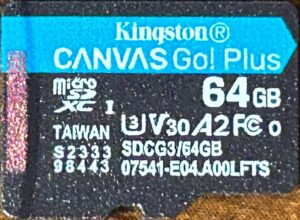 | 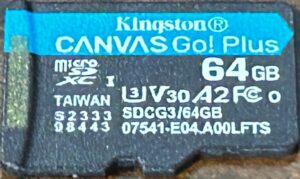 |
Ok, let’s get down to brass tacks: this card absolutely smoked the competition in terms of performance — even managing to outperform the Lexar Professional 1000x. All three cards had sequential read speeds, sequential write speeds, and random write speeds that were faster than anything else I’ve tested so far. Sequential read and sequential write speeds for all three samples were more than two standard deviations above average, and random write speeds were more than three standard deviations above average. In statistics terms, this means that this card performed better on sequential read and sequential write speeds than 95% of the cards out there, and better than 99.7% of the cards out there on random write speeds (assuming that the cards I’ve tested are representative of the general population of microSD cards on the market). Random read speeds were not the fastest, but were still respectable: two of the three scores were more than one standard deviation above average, while the third was just shy of one standard deviation above average.
This card bears the U3, V30, and A2 marks, while the package also bears the Class 10 mark. It easily surpassed the requirements for the Class 10, U3, and V30 marks. The A2 mark is a difficult one to meet — it requires a random read speed of at least 4,000 IOPS/sec and a random write speed of 2,000 IOPS/sec — and this one fell short of the mark. However, they performed well enough that I’ll say — and I mean it — that perhaps they would have hit these marks had they been tested under proper conditions.
Clearly, someone felt the need for speed when designing this card. If you need something to support high speed photograph/videography, I dare say — barring the results of the endurance test — that this is the card to go with.
Endurance tests for all three cards are still ongoing. None of the three has yet made it to the 2,000 read/write cycle mark. Samples #1 and #2 are expected to get there sometime in September 2024; the third is expected to get there sometime in November 2024.
June 8, 2024


